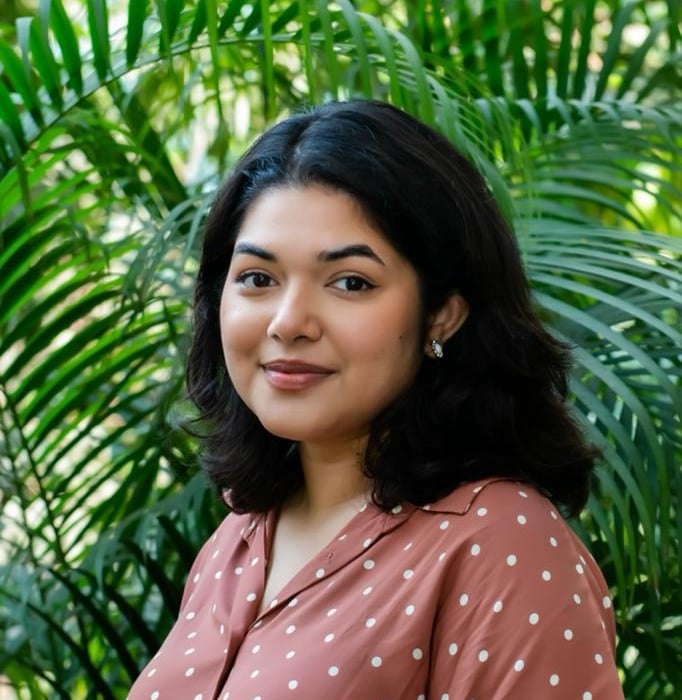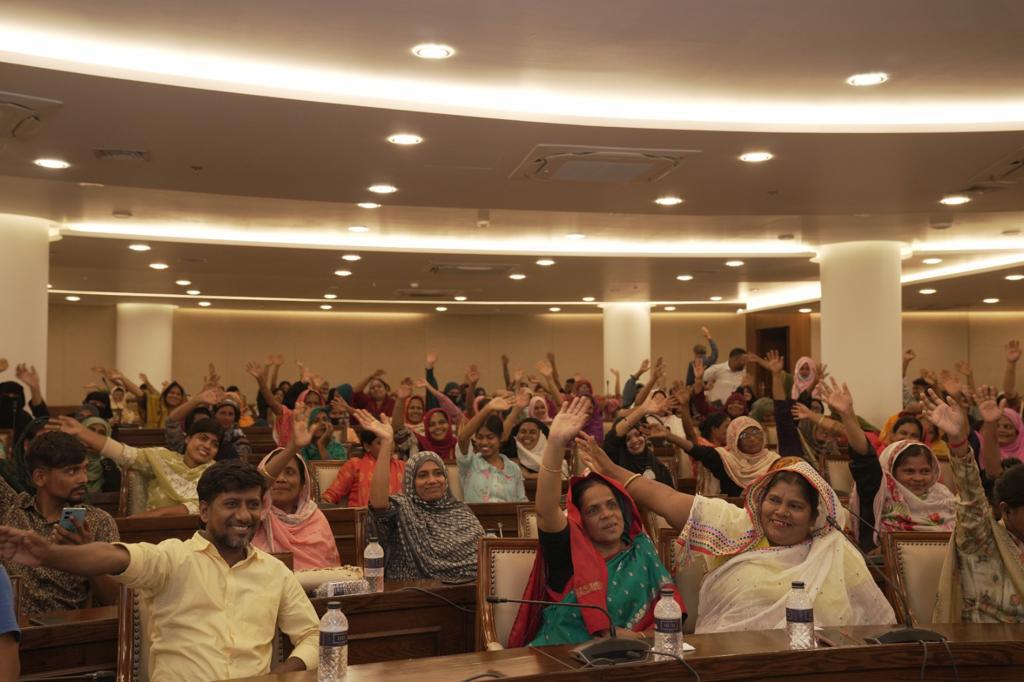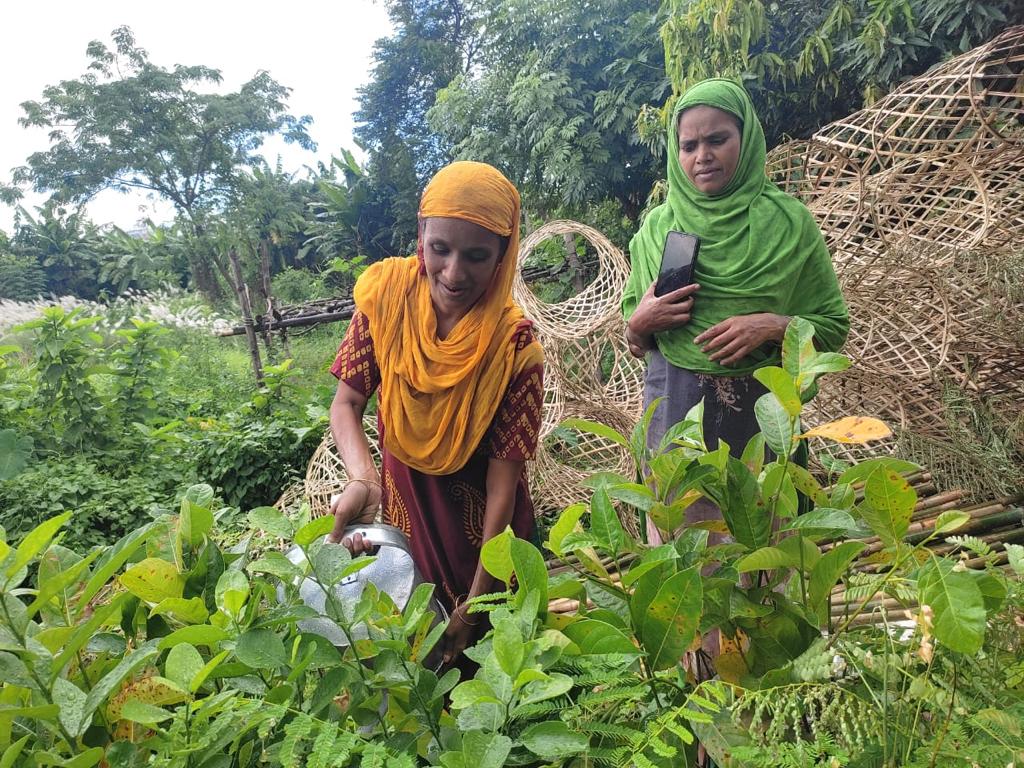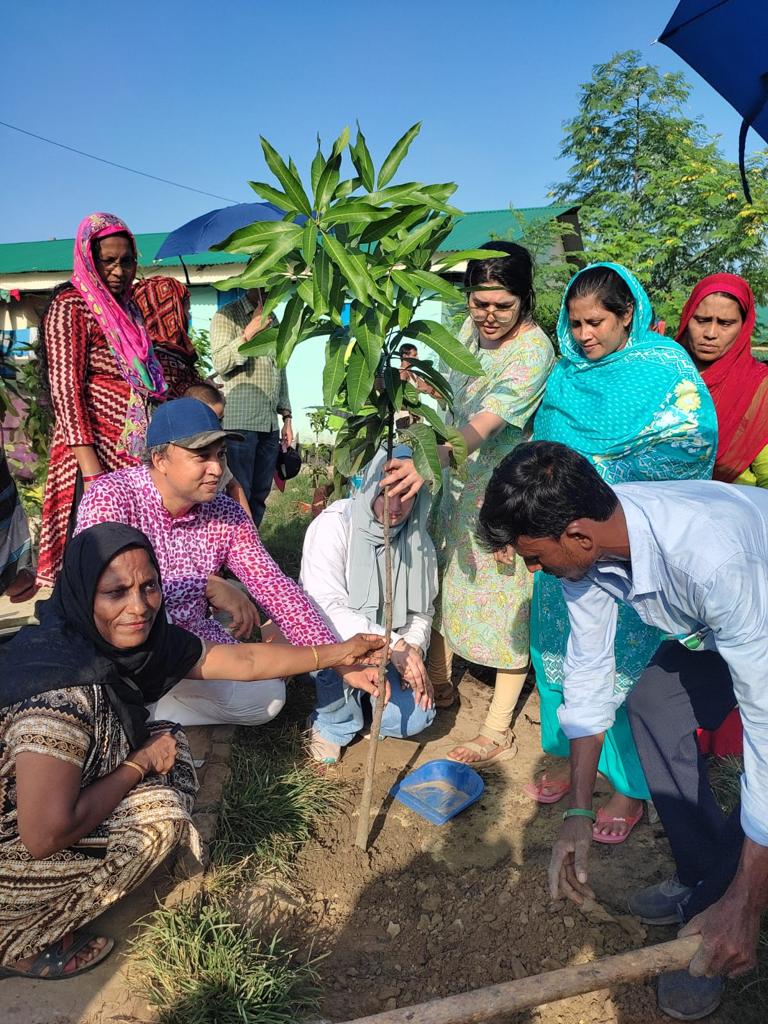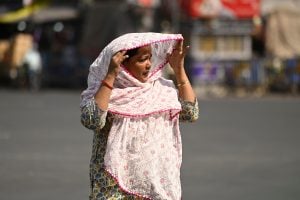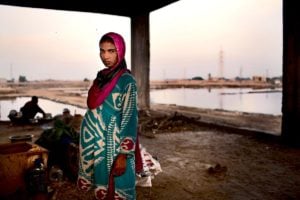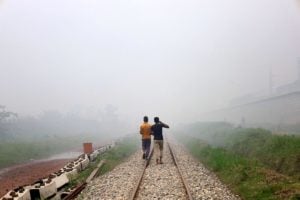In May 2023, Bangladeshi social welfare executive Bushra Afreen was appointed north Dhaka’s ‘chief heat officer’ as part of a programme by the Adrienne Arsht-Rockefeller Foundation Resilience Center that builds resilience in the face of climate impacts.
Afreen is one of the world’s six ‘chief heat officers’ (CHOs) who are responsible for unifying their city governments’ responses to extreme heat – and the only one in an Asian city looking to help specific cities plan and respond to heat stress.
This year, Asia sweltered under a series of heatwaves, with the World Weather Attribution organisation noting, “that climate change made the extreme heat about 30 times more likely and 1˚C hotter” in South Asia.
Bangladesh struggled to cope, with more than 30 million children shut out of education as schools were closed down. Afreen’s role came under increasing scrutiny, especially as she is also the daughter of the mayor of North Dhaka. Critics say her strategies fail to counteract the urban heat island effect. Moreover, disjointed coordination with government bodies undermines the efficacy of Afreen’s endeavours.
Dialogue Earth sat down with Afreen to understand her responsibilities, actions and long-term plan for dealing with increasing heat in cities like Dhaka.
Edited excerpts of the interview follow.
Dialogue Earth: Could you describe the scope and responsibilities of your role?
Bushra Afreen: As the chief heat officer (CHO) of Dhaka North, my work focuses on protecting the population from the dangers of extreme heat. This includes increasing awareness of heat-related risks, developing heatwave categorisation systems, and coordinating efforts to reduce these risks and enhance cooling measures such as installing cool pavements and roofs and planting trees.
What action was taken in your tenure?
In my first year, I focused on understanding bureaucratic processes and strategising to expedite initiatives. Raising awareness has been ongoing, with sessions held in vulnerable communities like Shagfuta Housing and Mirpur Ceramics where over 5,000 saplings have been planted.
We’re finalising an MoU with the Bangladesh Meteorological Department to integrate weather forecast data into the ShobarDhaka App [a citizen complaints app rolled out by the city’s governing body] along with a heat-health feature that will gather user data to understand heat’s impact on wellbeing.
Advisory efforts have translated into short-term plans, notably the mayor’s ‘zero soil’ initiative for extensive tree planting. There is also an upcoming heat action week that begins from 23 June with volunteers training for the survey on heat resilience among the citizens of Dhaka North. The survey begins on 27 June. The second phase of heat action week begins in July where we work on water and sanitation. All city corporation buildings will have WASH (water, sanitation, and hygiene) facilities incorporated in them.
I have also helped create a collaboration with Dhaka Water Supply and Sewerage Authority and [the private company] Drinkwell to ensure access to clean water for commuters and labourers. Efforts are underway to petition the Ministry of Disaster Management and Relief to recognise extreme heat as a natural disaster and to formally name distinct heatwaves, akin to cyclones.
What long-term options should the city take to tackle heatwaves?
One major challenge in Dhaka is the urban heat island (UHI) phenomenon, caused by activities like pollution and the proliferation of concrete and asphalt, which replace natural greenery and trap heat. These factors raise surface temperatures during the day and retain heat at night. Additionally, human activities like heating, air conditioning, and transportation add to the city’s heat.
Dhaka’s rapid population growth and urban expansion have led to extensive deforestation and the conversion of water bodies into high-rise developments, worsening the UHI effect and paving the way for severe heat waves. Halting urban expansion overnight isn’t feasible, but raising awareness among planners, builders, and consumers is vital for restoring green spaces and preserving water bodies. In a crowded city like Dhaka, understanding the thermal impact of buildings is crucial. We need to measure how much heat they produce and figure out ways to make older buildings cooler. We are also discussing initiatives like urban forests, inspired by the Miyawaki concept, with government entities for land acquisition and funding.
Waste management is another critical aspect of sustainable urban development. Unregulated waste disposal has led to methane hotspots across the city, requiring urgent action. We’re partnering with organisations like the AMAL Foundation for plastic bottle recycling. Lastly, data collection and analysis are essential for informed decision-making and proactive preparedness. By using data-driven insights, cities can improve their resilience to heat and develop effective response strategies for future challenges.
What would you do if you had more funding or support?
With additional funding or support, our focus would be on boosting awareness and advocacy efforts, along with engaging more with civil society and public-private partnerships. We believe that open discussions and collaboration are key to making timely decisions and implementing initiatives effectively.
At present, we are mobilising a volunteer network to engage 20,000 households through a baseline Knowledge, Attitude, and Practice (KAP) survey – which is designed to reveal misconceptions or misunderstandings which may be potential barriers for change – that also addresses existing conditions that increase vulnerability to heat. We are also creating a heat safety and awareness booklet and a collapsible hand fan that would be given to the surveyors, but also to commuters, schools, health centres, and more. With more financial resources, we could expand this campaign to reach an even larger audience.
Additionally, we need to accelerate the implementation of our urban forest initiative, and focus on nature-based solutions.
Do women face gender-specific issues when it comes to heat?
For women commuters, the lack of sanitation facilities presents a significant challenge, as women then drink less, so that they are not forced to need toilets, and this makes it hard to stay hydrated in hot weather. Similarly, women taking care of household duties often face prolonged exposure to heat while cooking or looking after children – whose hydration and shelter needs they need to take care of if the children are not in school.
Working closely with the city corporation and other partners, we’re making progress on initiatives like women-friendly “pink toilets.” These facilities will be strategically located near cooling spaces – shaded safe areas – provided by the city corporation, making them easily accessible for women seeking relief from the heat.
Our awareness booklet also shines a light on the unique challenges women face during heat waves, especially those who are pregnant or working. I’m also thankful for the enthusiastic participation of women from informal settlements in our tree-planting initiatives. Their dedication to environmental conservation and community resilience is truly inspiring.
How are you collaborating with international organisations to address the challenges posed by extreme heat?
Last year, we engaged with the UNDP through one of their programmes (LIUPCP) to work with women from 15 informal settlements, focusing on sustainability, biodiversity, and local trees. We worked together to identify stewardship, monitoring and tree planting locations where we planted 5,000 trees.
The CHO’s office pushed forward for a tripartite agreement including the Bangladesh Meteorological Department (BMD) and the Regional Integrated Multi-Hazard Early Warning System for Africa and Asia (RIMES). Through these collaborations, we not only receive essential forecasting data but also leverage it to develop a user-friendly mobile application. This application will serve as a platform for disseminating real-time information on heat risks and recommending appropriate measures to mitigate them, thereby enhancing public preparedness and resilience.
Our collaboration with C40 – a global network of mayors cooperating on climate change – has led to the development of a comprehensive climate action plan for Dhaka which launched on May 12th, 2024. Through participation in workshops, we have gained insights into simulations, such as the Paris 50-degree heat scenario, and examined how cities respond to extreme heat events. For instance, discussions have centred around protocols for managing school closures during extreme heat, emergency responses to fire outbreaks, and community support measures in the face of heat waves. Currently, we are looking into partnering with The Centre for Development Economics and Sustainability (CDES) at Monash University in Melbourne for our baseline KAP survey.


